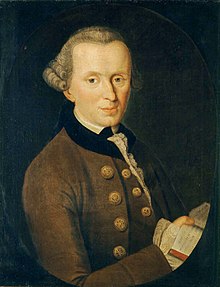Immanuel Kant 1724 80 moon cycles laternower 1804
Boundary Correlation functions 43:30
Status function operationζ conditionΖα stateζχζ
Output (φ(Στάτους Φυνκτιον))
Ουτουτ Υνουτ
Propositions
F(Freason) = A Priori = Bicycles = Triangle = Box = Analytic
f(self [ident eye] f(eye) [k ident] at {ion})
Φ(Κοντινγκεντ)
F(Contingent)
f(ex pi re meant) =
f(elaborating a f(set of(tautologies) f(analyzinging) the Γουέι Βέ Σπέακ Σπεακ Σπεάκ
Through speaking voluminously about concepts express able through words aimed at idea
t(ed[nature]) which would eliminate the requirement of a language other than self inverted
referential explaining the observable from the perspective of the observer as the
observed observes the interaction with the observation of obvious oxidation
breathing the constant expansion of contraction into which the out of rhym
eats into the pi of sublime three part harmony in the five heart wholrd
chambered to the beat of the pious pi apple eating people from
somewhere out west
Immanuel Kant
Immanuel Kant | |
|---|---|
 Portrait by Johann Gottlieb Becker, 1768 | |
| Born | 22 April 1724 |
| Died | 12 February 1804 (aged 79) |
| Education | Collegium Fridericianum University of Königsberg (B.A.; M.A., April 1755; PhD, September 1755; PhD,[1] August 1770) |
| Era | Age of Enlightenment |
| Region | Western philosophy |
| School | show Other schools |
| Institutions | University of Königsberg |
| Theses |
|
| Academic advisors | Martin Knutzen, Johann Gottfried Teske (M.A. advisor), Konrad Gottlieb Marquardt[11] |
| Notable students | Jakob Sigismund Beck, Johann Gottlieb Fichte, Johann Gottfried Herder, Karl Leonhard Reinhold (epistolary correspondent)[17] |
Main interests | Aesthetics, cosmogony, epistemology, ethics, metaphysics, systematic philosophy |
Notable ideas | show List |
show Influences | |
show Influenced | |
| Signature | |
 | |
| Part of a series on |
| Immanuel Kant |
|---|
 |
| Category • |
Immanuel Kant (UK: /kænt/,[18][19] US: /kɑːnt/,[20][21] German: [ɪˈmaːnu̯eːl ˈkant];[22][23] 22 April 1724 – 12 February 1804) was a German philosopher and one of the central Enlightenment thinkers.[24][25] Born in Königsberg, Kant's comprehensive and systematic works in epistemology, metaphysics, ethics, and aesthetics have made him one of the most influential figures in modern Western philosophy.[24][26]
In his doctrine of transcendental idealism, Kant argued that space and time are mere "forms of intuition" which structure all experience, and therefore that, while "things-in-themselves" exist and contribute to experience, they are nonetheless distinct from the objects of experience. From this it follows that the objects of experience are mere "appearances", and that the nature of things as they are in themselves is unknowable to us.[27][28] In an attempt to counter the skepticism he found in the writings of philosopher David Hume,[29] he wrote the Critique of Pure Reason (1781/1787),[30] one of his most well-known works. In it, he developed his theory of experience to answer the question of whether synthetic a priori knowledge is possible, which would in turn make it possible to determine the limits of metaphysical inquiry. Kant drew a parallel to the Copernican revolution in his proposal to think of the objects of the senses as conforming to our spatial and temporal forms of intuition, so that we have a priori cognition of those objects.[b]
Kant believed that reason is also the source of morality, and that aesthetics arise from a faculty of disinterested judgment. Kant's views continue to have a major influence on contemporary philosophy, especially the fields of epistemology, ethics, political theory, and post-modern aesthetics.[26] He attempted to explain the relationship between reason and human experience and to move beyond what he believed to be the failures of traditional philosophy and metaphysics. He wanted to put an end to what he saw as an era of futile and speculative theories of human experience, while resisting the skepticism of thinkers such as Hume. He regarded himself as showing the way past the impasse between rationalists and empiricists,[32] and is widely held to have synthesized both traditions in his thought.[33]
Kant was an exponent of the idea that perpetual peace could be secured through universal democracy and international cooperation, and that perhaps this could be the culminating stage of world history.[34] The nature of Kant's religious views continues to be the subject of scholarly dispute, with viewpoints ranging from the impression that he shifted from an early defense of an ontological argument for the existence of God to a principled agnosticism, to more critical treatments epitomized by Schopenhauer, who criticized the imperative form of Kantian ethics as "theological morals" and the "Mosaic Decalogue in disguise",[35] and Nietzsche, who claimed that Kant had "theologian blood"[36] and was merely a sophisticated apologist for traditional Christian faith.[c] Beyond his religious views, Kant has also been criticized for the racism presented in some of his lesser-known papers, such as "On the Use of Teleological Principles in Philosophy" and "On the Different Races of Man".[38][39][40][41] Although he was a proponent of scientific racism for much of his career, Kant's views on race changed significantly in the last decade of his life, and he ultimately rejected racial hierarchies and European colonialism in Perpetual Peace: A Philosophical Sketch (1795).[42]
Kant published other important works on ethics, religion, law, aesthetics, astronomy, and history during his lifetime. These include the Universal Natural History (1755), the Critique of Practical Reason (1788), the Critique of Judgment (1790), Religion within the Bounds of Bare Reason (1793), and the Metaphysics of Morals (1797).[25]
Diameters in Km
Anthropic principle
| Part of a series on |
| Physical cosmology |
|---|
 |
| Part of a series on |
| Intelligent design |
|---|
 |
| Concepts |
| Movement |
| Campaigns |
| Authors |
| Organisations |
| Reactions |
| Creationism |
The anthropic principle, also known as the "observation selection effect",[1] is the hypothesis, first proposed in 1957 by Robert Dicke, that there is a restrictive lower bound on how statistically probable our observations of the universe are, because observations could only happen in a universe capable of developing intelligent life.[2] Proponents of the anthropic principle argue that it explains why this universe has the age and the fundamental physical constants necessary to accommodate conscious life, since if either had been different, we would not have been around to make observations. Anthropic reasoning is often used to deal with the notion that the universe seems to be finely tuned for the existence of life.[3]
There are many different formulations of the anthropic principle. Philosopher Nick Bostrom counts them at thirty, but the underlying principles can be divided into "weak" and "strong" forms, depending on the types of cosmological claims they entail. The weak anthropic principle (WAP), as defined by Brandon Carter, states that the universe's ostensible fine tuning is the result of selection bias (specifically survivorship bias). Most such arguments draw upon some notion of the multiverse for there to be a statistical population of universes to select from. However, a single vast universe is sufficient for most forms of the WAP that do not specifically deal with fine tuning. Carter distinguished the WAP from the strong anthropic principle (SAP), which considers the universe in some sense compelled to eventually have conscious and sapient life emerge within it.[4][5] A form of the latter known as the participatory anthropic principle, articulated by John Archibald Wheeler, suggests on the basis of quantum mechanics that the universe, as a condition of its existence, must be observed, so implying one or more observers. Stronger yet is the final anthropic principle, proposed by John D. Barrow and Frank Tipler, which views the universe’s structure as expressible by bits of information in such a way that information processing is inevitable and eternal.[6]
Boundary Correlation functions 43:30
Status function operations
Basis vectors
Basis (linear algebra)
In mathematics, a set B of vectors in a vector space V is called a basis if every element of V may be written in a unique way as a finite linear combination of elements of B. The coefficients of this linear combination are referred to as components or coordinates of the vector with respect to B. The elements of a basis are called basis vectors.
Equivalently, a set B is a basis if its elements are linearly independent and every element of V is a linear combination of elements of B.[1] In other words, a basis is a linearly independent spanning set.
A vector space can have several bases; however all the bases have the same number of elements, called the dimension of the vector space.
This article deals mainly with finite-dimensional vector spaces. However, many of the principles are also valid for infinite-dimensional vector spaces.
Mercury: 4879
Venus: 12,104
Earth: 12,756
Mars: 6792
Jupiter: :
142,984
Saturn: 120,536
Uranus: 51,118
Neptune: 49,528






Comments
Post a Comment
No Comment